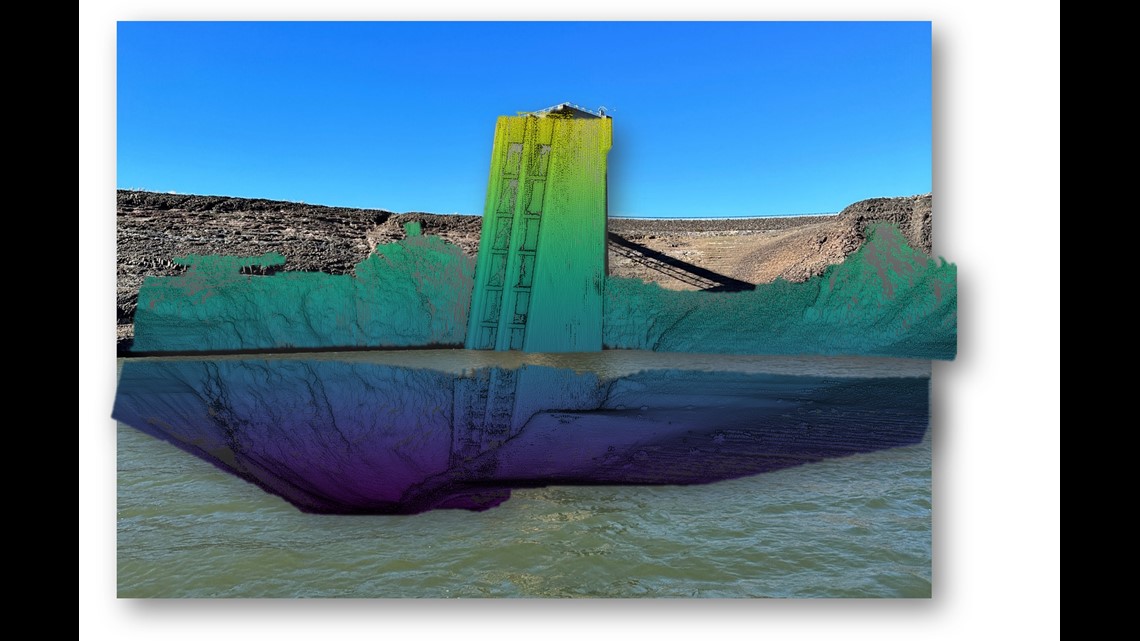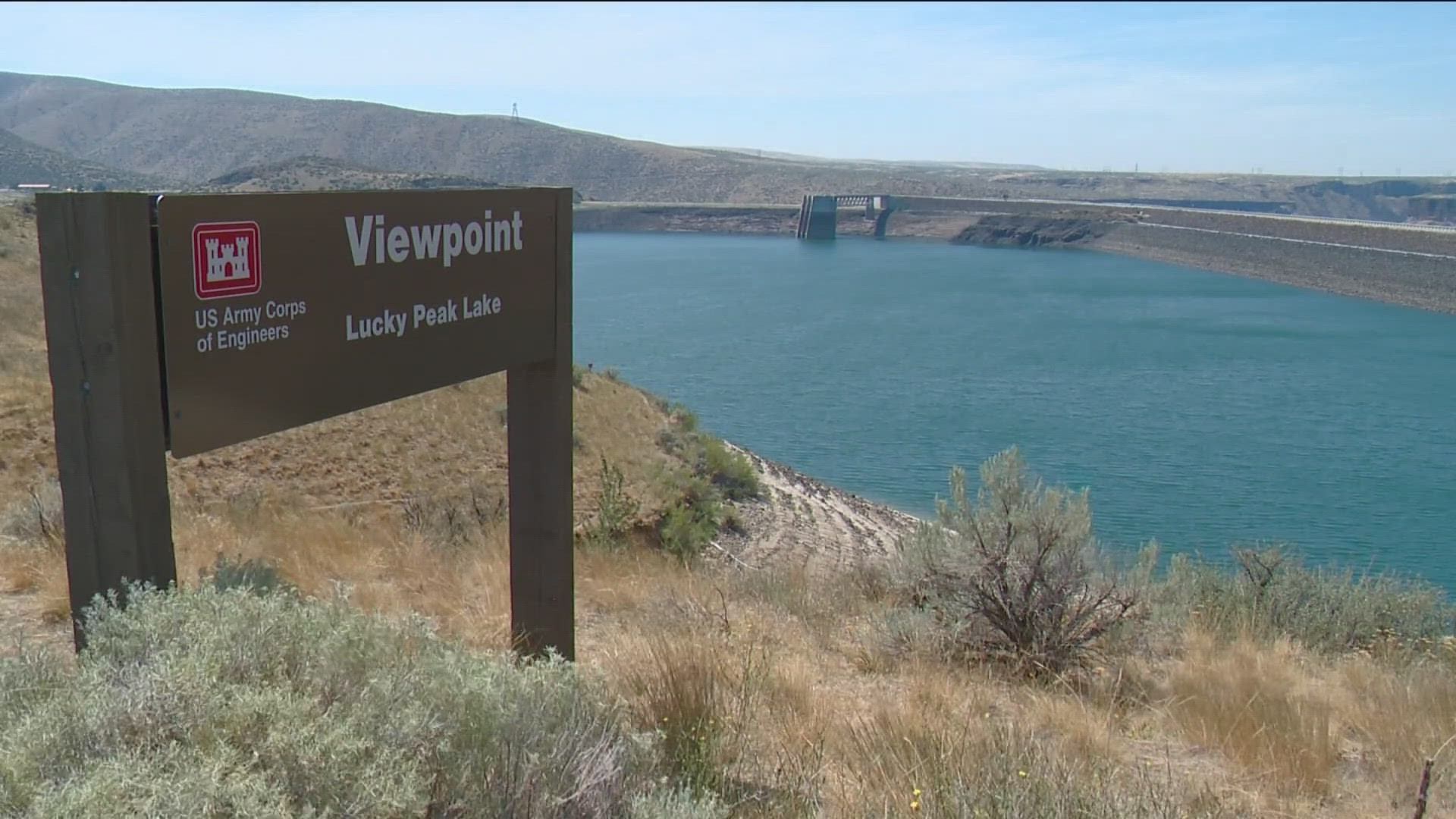BOISE, Idaho — Lucky Peak Reservoir is a popular destination for boating and relaxation, attracting visitors from all over Idaho. The massive dam not only creates the reservoir but also provides water to the surrounding Idahoans.
With being such an important part of the infrastructure, operational and safety are top of mind.
Lucky Peak Dam operators (U.S. Army Corps of Engineers and U.S. Bureau of Reclamation) are working to ensure the dam's safety for years to come. In October of last year, operators asked the US Geological Survey (USGS) to evaluate how much sediment was accumulating at the dam's intake.
This gives operators a way to quantify a variety of changes from now on. The USGS provided a composite image using several imaging tools, including LiDar and multibeam sonar (see below).


"This is an excellent opportunity for them to have a dataset, a very rich dataset to help them (dam operators) with some insight on their routine maintenance," Taylor Dudunake said.
Dudunake is a hydrologist with the USGS Idaho Water Science Center. He was also the Principal Investigator in this effort.
Operators must track sediment accumulation. If too much dirt, mud, and rocks build up, the dam will not work efficiently or safely.
Dudunake explained, "A dam in the middle of some waterway will inherently start trapping things besides just water. And sediment is one of those things. As an operator of a dam, they're obligated to hone in on places where they might need to pull sediments out to ensure the safety of the dam."
Sediment accumulation can also reduce storage in the reservoir. Less storage means we won't be able to hold as much water in the warmer months, limiting the ability to mitigate flooding.
With this new information for the USGS, operators will be able to track sediment accumulation with precision. That way, they can make informed decisions about what maintenance needs to be done in the future.
Dudunake elaborated, "Our dams have a lifespan. As you begin to fill up reservoirs with sediment, begin to fill up the reservoir with sediment, then that lifespan can degrade. It's not necessarily something that we have to worry about as much with Lucky Peak, because there are two reservoirs upstream."
Watch more Local News:
See the latest news from around the Treasure Valley and the Gem State in our YouTube playlist:
HERE ARE MORE WAYS TO GET NEWS FROM KTVB:
Download the KTVB News Mobile App
Apple iOS: Click here to download
Google Play: Click here to download
Watch news reports for FREE on YouTube: KTVB YouTube channel
Stream Live for FREE on ROKU: Add the channel from the ROKU store or by searching 'KTVB'.
Stream Live for FREE on FIRE TV: Search ‘KTVB’ and click ‘Get’ to download.

